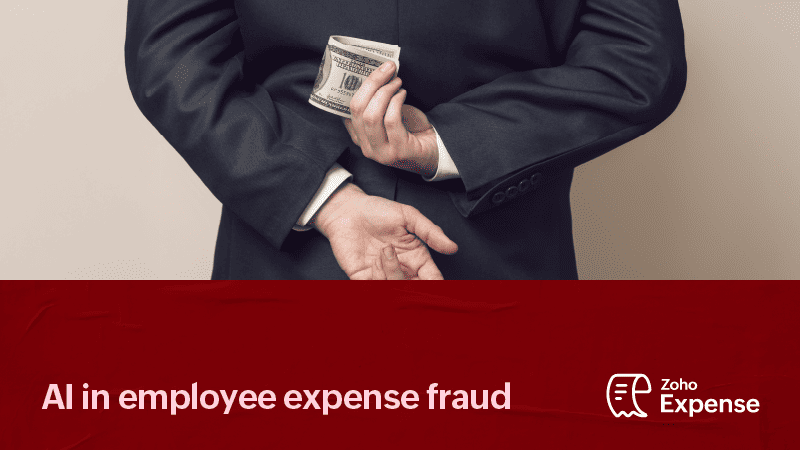- HOME
- Expense Management
- 4 notorious employee expense frauds that AI can help eliminate
4 notorious employee expense frauds that AI can help eliminate
From paper forms and manual processes to automated expense reports, virtual cards, and now AI-assisted processes, managing employee expenses has seen multiple paradigm shifts. However, employee expense fraud has remained an unwanted constant throughout this evolution.
While the 2018 Wells Fargo scandal remains the most high-profile case of employee expense fraud, other similar stories continue to grab the spotlight frequently. In fact, fueled by hybrid work models and the rise of corporate cards, employee expense fraud has risen by 292%, post-pandemic.
AI is a common denominator in each of these stories as it could have helped identify the fraud sooner or prevented it altogether.

Here are four examples of prominent employee expense frauds and how an AI-powered solution can help eliminate the same.
1. Duplicate expenses
Submitting multiple reimbursement claims for the same expense is an age-old technique that is still surprisingly prevalent. Existing duplicate detection based on parameters like amount, merchant name, and date can catch simple, direct duplicates. AI can crank it up a notch.
Re-submitting previously reimbursed expenses in a later expense report, under the pretext of forgotten expenses, is an example of a duplicate expense that AI can easily flag.
In case of group expenses, like a business lunch split amongst employees, AI can cross-reference receipt details to ensure multiple people do not claim the entire reimbursement by submitting the same receipt.
2. Fictitious expenses
A surge in solutions offering to build custom, fake receipts complete with authentic logos and legal information is a rising cause for concern. This type of fraud also seems the most difficult to detect. Fortunately, AI can perform multiple checks to verify the receipt's authenticity.
For example, AI can extract the merchant's name and then match it against restaurant listings on Yelp or Google to ascertain authenticity.
Take the highly crafty case where a burger chain in Canada renamed their dishes after standard office supplies to encourage fraud. Even here, AI can triangulate social media chatter, PR announcements, and news to flag such merchants as suspicious.
3. Mischaracterized expenses
These expenses are often the easiest to get away with. A common example is passing off a personal expense as a business one. Another common example is spending on travel, accommodation, or food for family, friends, and pets on a business trip.
Here, AI can extract and analyze line items and other details in the receipt to pick up minor anomalies. It can identify if an individual business trip has food receipts billed as a meal for two, an additional kid-friendly meal purchased as part of lunch, or even an above-normal consumption of drinks or water. All these can be flagged for a more detailed manual audit.
4. Non-arms length/Inflated expenses
These are expenses where employees pay a friend or relative for a business expense that is much higher than the actual value, then ask for reimbursement. Employees can also negotiate deals with vendors for receipts with inflated values and pocket the difference.
AI can once again check the values with market values on the internet, may be even from another vendor that fulfills the business's criteria, and flag them for deeper scrutiny.
While the role of technology has significantly risen in employee expense management, so has its role in aiding employee expense fraud. The only linchpin that can tip the scale towards businesses, help weed out even the most creative expense fraud, and help companies salvage their bottom line is AI.
Out-of-the-box AI solutions that help eliminate employee expense fraud are still nascent. But, their rapid evolution and utilization in eliminating employee fraud is a given.
Solutions like Zoho Expense are adopting AI, not only for audits but also to improve the user experience and automate processes. If you are looking for a good business travel and expense management solution, it may be worth your while to go for one that prioritizes AI in its roadmap.